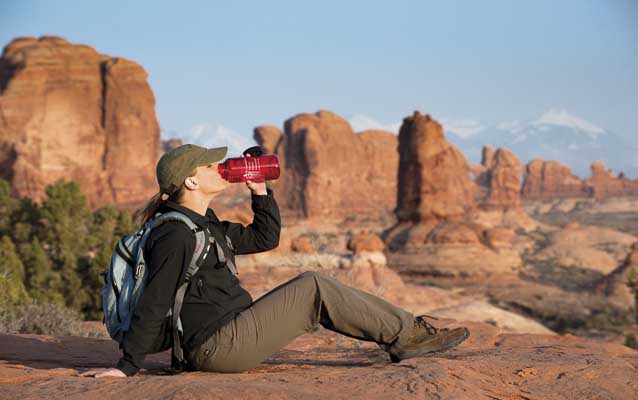Last updated: August 2, 2022
Lesson Plan
Traveling Safely in the Desert

- Grade Level:
- Upper Elementary: Third Grade through Fifth Grade
- Subject:
- Social Studies
- Lesson Duration:
- 30 Minutes
- Additional Standards:
- Health
Essential Question
How should I prepare for an outdoor adventure? What should I do if I get lost?
Objective
Students will be able to:
a. Name two items to take along for a safe hike.
b. Name two safe responses if one becomes lost outdoors.
c. List the four cardinal directions.
Preparation
Gather the following materials:
Compass direction signs, access to video
Procedure
1) Introduce the field trip by printing Traveling Safely on the board. Tell students you will be discussing ways of traveling safely when they are in the desert.
2) Ask students to name the four cardinal directions. Place the four directional signs around the perimeter of the classroom. Tell students that once they know one direction, they can always find the others if they know the order. Have students turn and point to the directions while they say, “Never Eat Soggy Waffles.” Have students stand by their seats for a quick round of Direction Freeze. Say a direction. Students should face that direction by the time you say, “Freeze!” Ask students to sit down if they are facing the incorrect direction. Increase the pace.
3) Tell students directions help you find your way if you have a compass or if you know your landmarks. A landmark is something big you can see from far away or something distinctive everyone would notice. Give students examples of landmarks that would help students find their way to school. Give examples of landmarks they might see while out hiking (i.e. three canyons coming together, an arch shaped like a whale, the mountains). Ask students to name landmarks visible in each direction from the playground.
4) Ask students to listen closely to a news story you are going to show them. Play the video about the Carrico sisters. (see YouTube link/ABC news link below) Ask the students to list the Carrico sisters’ mistakes and discuss each mistake (not paying attention to landmarks or directions, not waiting for an adult, not staying put). Discuss things the sisters could have done or taken with them to make their journey safer.
5) Remind students the sisters were not prepared to go on a hike. Ask students what they should bring with them if they go hiking. List these on the board.
6) Tell students that sometimes, even if you are prepared, you can get lost. If they ever get lost, they need to do four things. All four start with “S”. Refer to the video about how the Carrico sisters did these things.
-
Write “Seeking Shelter” on the board. Discuss different types of shelters for different types of weather.
- Write “Stay Put” on the board. Tell students that staying put is the most important thing to remember. If they remember nothing else, remember to stay put. Have one student walk around the classroom. Another student should walk around and try to tag them. Discuss how long it took because both students were moving. Next, have a student stand in the middle of the classroom and ask another student to walk over and tag them. Discuss how much quicker the second student was tagged.
- Write “Stay Calm” on the board. Discuss how hard it might be to stay calm, since it would be scary to be lost and alone. Discuss things students could do to stay calm and pass the time (i.e. sing songs, make up stories, play games, think of their family).
- Write “Signal” on the board. Discuss how and when they should signal. Discuss the importance of signaling, even if the person approaching is a stranger. If they get lost, there will be a whole bunch of people searching for them. Many will be people they do not know.
7) Have the class say the four S’s with you. Reiterate the most important thing to do, if they find themselves lost, is to stay put. Students may ask how they are supposed to “stay put” if they are also supposed to “seek shelter”. Tell them the best thing to do is to find shelter first and then to stay there. Tell students that using common sense is very important for survival. If their shelter becomes unsafe, such as a canyon bottom during a flash flood or a ridge-top during a lightning storm, then they should find a new shelter.
8) Ask the students to think back to the news story again. Which of the Four S’s did the sisters eventually use to help them survive and be found? Students will often point out how the Carrico sisters tried to start a fire. Tell students that fires during survival situations is a tricky gray area. Ask students if anyone has ever started a fire without matches or lighter? Is it easy or hard? Tell students it takes a lot of work and energy to find the materials to build a fire, start it, and keep it going. Explain how most of the time, their energy would be better used for finding a good shelter, staying put, and resting until help arrives.
Extension:
Have students create a lost hiker story or dramatization. Tell them to include what the hiker did to be found, or to find her way, including the use of landmarks.
Links:
https://youtu.be/mYVmsAAPa2c
